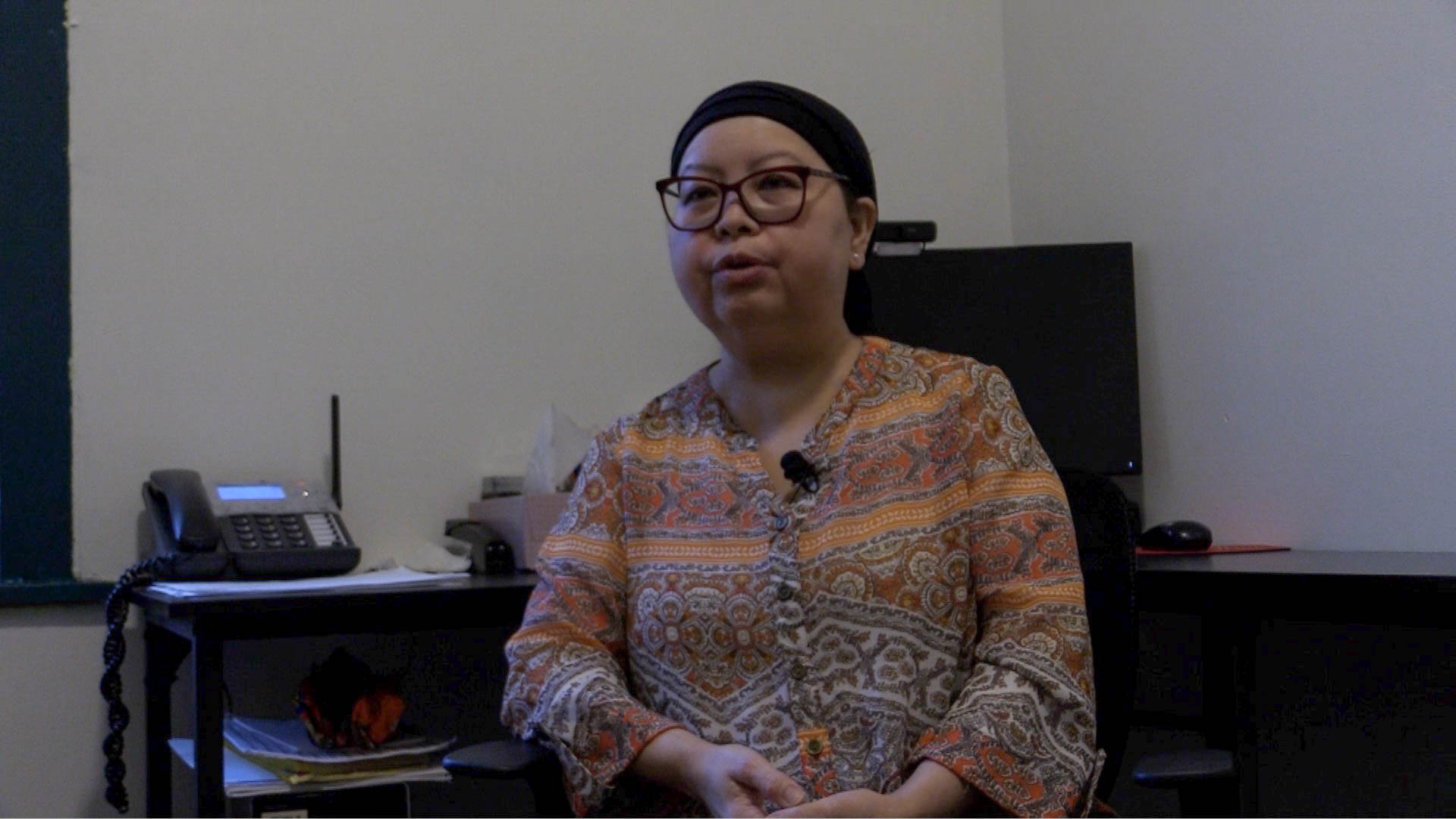
Layman Lee, of GrowNYC, a non-profit enviromental organization, strings plastic bottles together to make a sculpture at Union Square Park. The sculpture was designed to draw public attention to recycling. Photo by Kwanwoo Jun
Layman Lee, a local environmentalist, usually arms herself with pamphlets on recycling waste for when she meets people on the street. But on Wednesday, she prepared something different: a long fishing wire and hundreds of empty plastic bottles.
Stringing the bottles together, Lee, 26, made an “eye-catching” sculpture for the GrowNYC fair at Union Square Park on 14th Street and Seventh Avenue on Sept. 29.
“Every year, New Yorkers throw 25,059 tons of recyclable plastic bottles in their household garbage,” read a nearby sign. “This sculpture represents the bottles trashed.”
In New York City, the biggest municipal garbage producer in the United States, half of the city’s recyclable waste is thrown in the garbage instead of being recycled. GrowNYC, a non-profit environmental group for whom Lee works, cites a lack of public awareness as the culprit.
Christina Salvi, 34, recycling outreach and education coordinator for GrowNYC, said about 35 percent of the city’s waste is recyclable, but only 15 to 17 percent is recycled in a city of more than 8 million.
The city’s Department of Sanitation handles 11,000 tons of residential garbage daily – about double the amount of Los Angeles and three times that of Chicago -, with another 11,000 tons of commercial waste handled privately every day, CNBC reports.
But New York City itself has no landfills. Instead, it pays other states to haul away its garbage.
“When people throw things away, they don’t think about it,” Lee said.
Lee said she and her colleagues discussed how to raise public awareness more effectively during the nine-hour environmental fair on Wednesday.
“Simple. Eye-catching. That’s all I need to be here,” Lee said, smiling, before climbing onto a chair to work on the top of her six-foot sculpture. “We just sat down for a whole day, drilled the holes through the necks and then strung them with a fishing wire.”
And, as it turns out, it worked well.
Many of passers-by, including tourists, were drawn in by the sculpture, giving Lee and her colleagues an opportunity to educate them.
“Every 50 seconds, New Yorkers throw away over 1,000 plastic bottles or jugs. So that’s what … the sculpture represents,” said Michael Rieser, 53, a GrowNYC coordinator from Brooklyn.
Rieser busily handed out pamphlets on the city’s recycling rules to people and explained what items should or should not be recycled. Displayed at hand for educational purposes were two transparent recycling bins: a green bin for collecting paper and a blue one for metal, glass and plastic materials.
People took photos of the sculpture and listened to Rieser.
The sign by the GrowNYC sculpture displayed an array of ascending numbers of the plastic bottles dumped by the second in the city. It showed that 22 plastic bottles are being thrown in the garbage in every second, 45 in two seconds, 67 in three seconds, 89 in four seconds, and 1,116 in 50 seconds.
“That’s amazing. That’s crazy,” said Ellen Kuchli, 57, a tourist from Israel, in response to the plastic-bottle sculpture and statistics about New York City waste.
